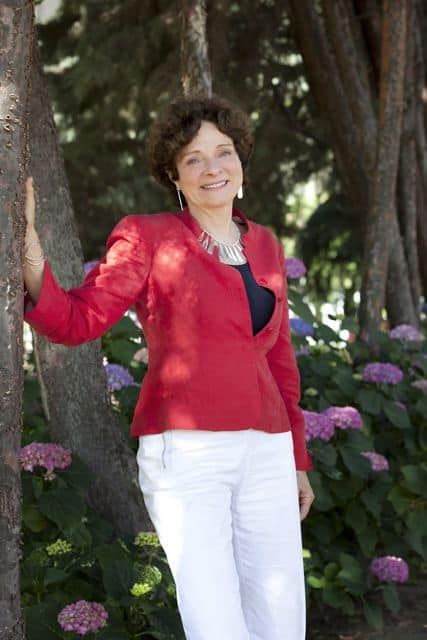When we talk about stem cell biology or regenerative medicine, Helen M Blau shines as a bright star.
Over the decades, she remains consistently focused on applying biology for the improvement of human life.
She also demonstrated cellular plasticity and revolutionized the landscape of stem cell biology. So, let’s learn more about her fascinating journey and research work.

Childhood
Born on 8 May 1948, Helen M Blau was the adorable daughter of George E. Blau and Gertrud M. While her father was a historian, her mother was a teacher who used to teach German. During World War II, her Austrian parents immigrated to the U.S.
Although she was born in London, she grew up in the United States. When she was six years old, her family moved to Germany, where she had a culturally rich childhood.
She was well-traveled when she was still a child. Helen M. Blau has dual citizenship of the United States and Britain.
Education and Work
In 1969, Helen M Blau completed her B.A. from the University of York located in England. Based on the advice of her professor J. Ramsey Bronk, she went to Harvard.
She got herself enrolled and eventually completed her M.A. in 1970. Then, Helen decided to do higher studies in biology from the same educational institution and eventually earned her Ph.D. in 1975.
At Harvard, she meets renowned biologist Fotis Kafatos, and soon, she started to study silk moth eggshell morphogenesis. It was here that she developed an immense interest in genetics.
Then, Helen M Blau moved to the west coast and became a postdoctoral fellow in the Department of Biochemistry and Biophysics at UCSF.
Very few people know that before starting her career by joining the Stanford University as a faculty member in the Department of Pharmacology in 1978, she worked as a genetic counselor for a brief period.
Helen M Blau worked hard at the Stanford University as a faculty member, and her hard work paid off. In 1986, she became an Associate Professor in the Department of Pharmacology and chose to continue her research work.
Helen M Blau came to know about Duchenne Muscular Dystrophy (DMD) disease at the Stanford University. She was shattered to know that the rare and incurable disease degenerates the muscles and affects boys leading to childhood mortality.
Soon, she started to focus on the cause of the disease, and after intense research, she rightly identified the culprit- defective myoblasts. These are a kind of muscle cells.
She also identified the way the disease advance within the body. Her research paved the way for a new approach towards muscle rejuvenation.
Gradually she got success in creating heterokaryons. These are cells comprising of more than one nucleus.
She created heterokaryons by fusing mouse muscle cells with the amniotic cells of human beings. The selected mouse muscle cells were differentiated and multinucleated. She was quickly recognized for her creation of these reprogrammed cells.
In 1985, she was elated when her heterokaryon cells were on the cover page of a reputed scientific journal -Frontiers in Biology issue of Science.
In 1994, Helen M. Blau was appointed as the President of the American Society for Developmental Biology. She remained in that position for a year.
She added another feather to her cap when she was appointed as the Director of Gene Therapy Technology at the Stanford University medical school in 1997.
In 2002, when The Donald E. and Delia B. Baxter Laboratory was started at the Stanford University School of Medicine, Helen M Blau was appointed as the first director of the lab.
At that time, she was working in the department of microbiology at the Stanford University. The very same year, she was also appointed as the President of the International Society of Differentiation.
In 2003, she was bestowed with an honorary doctorate from the prestigious University of Nijmegen, Netherlands. Till now, she has written more than 200 publications.
One of the goals of her research work was the rejuvenation of muscle stem cell function. It was to have more possibilities of enhancing muscle repair to prevent muscle degeneration due to aging. Many of the existing stem cell-based therapies are because of her research.
Awards
Helen M Blau received several awards in her illustrious career. Among these, some of the notable awards are as follows:
1992-Senior Career Recognition Women in Cell Biology Award
1999-FASEB Excellence in Science Award
2001- McKnight Technological Innovations for Neuroscience Award
2007- Fulbright Senior Specialist Award (Institut Pasteur)
2011-AACR-Irving Weinstein Foundation Distinguished Lecturer
2015- Glenn Award for Research in Biological Mechanisms of Aging
2015- Stanford OTL Outstanding Inventor Award
2017- Li Ka Shing Research Award
Today, Helen M Blau is continuously mentoring young scientists, especially women from all over the world. She helps them to identify their strengths and weaknesses to help them in achieving their goals. On the personal front, Helen M Blau has two kids, and both are doing well in their respective careers. While one of her kids is now a successful architect, and the other one is practicing law. She is married to David Spiegel, an Associate Chair of Psychiatry at Stanford. She is now a fellow of the American Association for the Advancement of Science. She is also an esteemed member of the American Academy of Arts and Sciences since 1996.
References
http://www.nasonline.org/member-directory/members/3000435.html
https://www.ahajournals.org/doi/full/10.1161/circresaha.112.277863
https://www.ncbi.nlm.nih.gov/pmc/articles/PMC5676936/
http://med.stanford.edu/baxterlab.html
